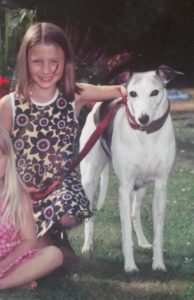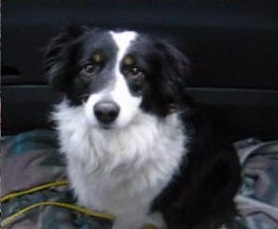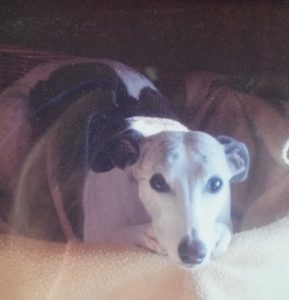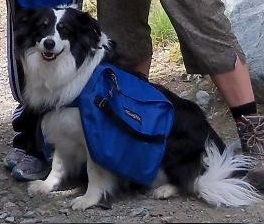Why I Support Pet Adoption

Editor’s Note: Please welcome our newest intern, Devon Hodge! Devon lives in Washington State, where she attends Western Washington University. She is a senior majoring in English with an emphasis in creative writing. Her dog, Diego, is a rescue and has been living with her family for almost 2 years.
All my life, I’ve had dogs. Growing up, my family owned two purbred whippets with a tracible lineage going back generations. Their names were Cisco and Indy. They were not adopted; they were purchased from a local dog breeder and they were great dogs. However, I never felt like my family was providing those dogs with anything that they couldn’t have found elsewhere. With a price tag of over one-thousand dollars each, Cisco and Indy were luxury pets. Only people with money to spare would consider buying them. No matter where those puppies ended up, it’s likely they would’ve been comfortable, well-provided for, and even spoiled.
 That was certainly true of my family. We spoiled those dogs. As a child, I thought of Cisco as a brother rather than as a pet. He was a year older than me. I learned many things about the world from watching him. I had a special bond with that dog. He was my best friend.
That was certainly true of my family. We spoiled those dogs. As a child, I thought of Cisco as a brother rather than as a pet. He was a year older than me. I learned many things about the world from watching him. I had a special bond with that dog. He was my best friend.
When Indy passed away, Cisco became my family’s only pet. We quickly learned that Cisco didn’t make a good only pet. He grieved deeply, and seemed depressed unless he was in the company of other dogs. Of course, there was only one solution to our problem. We needed to find a new companion for Cisco.
However, we weren’t prepared to start over with a new puppy. The expenses associated with purchasing a purebred seemed unreasonable; by the time Indy passed away, my parents had three human children to care for in addition to Cisco. So we went through a different channel to find the perfect new pet. We decided to adopt.
The first pet we adopted was a Border collie/Australian shepherd mix named Daisy. We didn’t plan on falling in love at first sight when we visited the dog shelter in Tacoma, Washington for the first time. We were just going to look. But when we entered the room labeled “Adoptable Dogs” and saw that adorable black-and-white face pressed up against the chain-link fencing, we were helpless.
 My youngest sister, Rachael, who was only six years old at the time, ran up to Daisy’s cage and crouched down. She stuck her fingers through the fencing. I remember holding my breath, scared that something bad would happen—after all, I’d heard nasty things about dogs in shelters—but sweet, loving Daisy wiggled up to Rachael’s hand and licked her fingers enthusiastically.
My youngest sister, Rachael, who was only six years old at the time, ran up to Daisy’s cage and crouched down. She stuck her fingers through the fencing. I remember holding my breath, scared that something bad would happen—after all, I’d heard nasty things about dogs in shelters—but sweet, loving Daisy wiggled up to Rachael’s hand and licked her fingers enthusiastically.
After we went home that night, my family gathered to discuss our plans for this new dog. At that point, we hadn’t decided if we would take her or not. We’d been warned that, like many other shelter animals, Daisy was traumatized, neurotic, and had some temperament issues. Although she hadn’t hurt anyone, she was clingy, scared of certain people, and terrified of all noises. On top of that, she was a known escape artist. No matter how high the wall, she would get past it.
We deliberated for days. My family knew that the Tacoma pet shelter was a kill shelter. If the shelter ran out of room or resources to care for all the pets under their roof, they would euthanize those that had been there the longest.
Daisy had already been there for two weeks when we met her. She was running out of time.
 One week after meeting Daisy for the first time, we drove back to Tacoma to pick her up. With a pile of blankets, leashes, dog toys, food and water dishes, and dog beds waiting in the back of the family van, we walked our new pet out of the shelter for the last time. Cisco was waiting in the car. When he saw Daisy for the first time, it was clear that he, too, fell immediately in love. The whole drive home, he stared down at the newest addition to our family, wagging his tail.
One week after meeting Daisy for the first time, we drove back to Tacoma to pick her up. With a pile of blankets, leashes, dog toys, food and water dishes, and dog beds waiting in the back of the family van, we walked our new pet out of the shelter for the last time. Cisco was waiting in the car. When he saw Daisy for the first time, it was clear that he, too, fell immediately in love. The whole drive home, he stared down at the newest addition to our family, wagging his tail.
When we got home, the first thing we did was change Daisy’s name. Daisy’s life had been rough up until we adopted her. There were clear signs that she’d been abused. She cringed at every loud sound, sudden movement, or raising of voices. We agreed that giving her a new name might help her leave her old life behind.
We decided to call her Sadie. It was close enough to Daisy that it wouldn’t be confusing. She responded to it right away—a sign of her intelligence and willingness to please us.
During the four years that we had her, Sadie proved to be the best dog my family ever had. She was incredibly smart, loyal, loving, and willing to learn. During the second year that we had her, I spent all summer training her for a local dog show. Sadie blew away the competition, winning the grand prize in obedience after a couple months of training. It was her first—and last—show.
 Sadly, Sadie passed away at around age six from a rare genetic disease called Gray Collie Disease. But the four years that she lived with our family were the best. Sadie helped Cisco—and the rest of my family—get over the grief of losing Indy. Sadie was there for us when Cisco passed away two years later. She served as emotional support for me when I experienced panic attacks and anxiety, and provided countless hours of entertainment for my younger sisters as they taught her tricks and took her on long walks through the forest.
Sadly, Sadie passed away at around age six from a rare genetic disease called Gray Collie Disease. But the four years that she lived with our family were the best. Sadie helped Cisco—and the rest of my family—get over the grief of losing Indy. Sadie was there for us when Cisco passed away two years later. She served as emotional support for me when I experienced panic attacks and anxiety, and provided countless hours of entertainment for my younger sisters as they taught her tricks and took her on long walks through the forest.
Sadie taught me that it’s not always the rescuer who does the rescuing. When you adopt a dog, you’re giving that animal something that no one else can or is willing to give: a chance at a new, better life. And who knows? Maybe that dog will give you the same chance.
